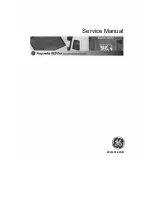
160
Reference Manual
00809-0100-4530, Rev DD
May 2016
By adjusting the surface threshold the product surface is properly detected as illustrated in
.
Figure 7-8. Echo Curve after Surface Threshold Adjustment
To adjust the amplitude thresholds, see
“Using the echo curve analyzer” on page 153
In the
Echo Curve Analyzer
in RRM, the amplitude thresholds can be easily dragged to the
desired values.
7.5
Interface peak not found
In interface applications where the bottom product has a relatively low dielectric constant
(<40), or if the signal is attenuated in the upper product, the amplitude of the reflected
signal is relatively low and difficult for the transmitter to detect. In such cases, it may be
possible to detect the reflected signal if the corresponding amplitude threshold is adjusted.
The Rosemount Radar Master (RRM) lets you view a waveform plot to analyze the
measurement signal. The plot shows the signal and the thresholds used for the different
amplitude peaks. By adjusting the Interface Threshold, it is possible to detect even weak
interface signals.
Guidelines for amplitude threshold settings:
The Interface Threshold should be approximately 50% of the interface signal
amplitude.
If possible, the Interface Threshold should be higher than the Surface Threshold.
You can use the RRM software or a Field Communicator to change the amplitude
thresholds. See
“Using the echo curve analyzer” on page 153
for more information.
If the Lower Product Dielectric Constant is known, the corresponding configuration
parameter can be changed as an alternative to adjusting the amplitude thresholds. See also
“Dielectric constant settings” on page 314
illustrates a situation where the Interface Threshold is too high. The signal
amplitude peak at the interface between the upper and lower products is not detected in
this case.
3.0
5.0
After Surface Threshold is adjusted,
the product surface is correctly
detected
Amplitude
, m
V
Distance, m
Reference Threshold
Surface Threshold=
Amplitude Threshold
Curve (ATC)
















































